The Hypersynth Xenophone – the most intriguing analog electric guitar synth sound ever. Check out “Demo 1” attached to this review. One of the best Xenophone presets is that screaming analog sound behind those arpeggio lines.
Sure, the synthesizer is good for more than distorted sounds and arpeggios, but sometimes one special sound is the door-opener to the instrument. A sound that artists and synth tweakers have been waiting for!
How, if not by its sound, can a modern synth be evaluated? You can’t go by appearances. All those Xenophone knobs and LEDs may seem to indicate a certain potential, but such technical aspects are not by any means a guarantee … Simple synthesizers may even sound better than those cluttered ones. A single sound is a far better indication of what’s really under the lid than dozens of knobs.
A synthesizer is a musical instrument – and it’s all about sound!
Hypersynth clearly profits from many years of experience in software synth development, even if it’s a newcomer to the field of hardware synths. Xenophone is a most remarkable beginning. It’s full of surprises: the signal path is fully analog and there’s a huge memory space (nearly 1,000 presets), a sequencer, arpeggiator and an effects section with “class”. For DAW freaks, Hypersynth offers an additional XEditor (for Windows computers) – a freeware for MIDI control of all 212 (!) Xenophone parameters (in CC or NRPN format). Plus 128 additional memory locations. Not bad, not bad at all!
Let’s go for it all” might even have been Hypersynth’s motto.
But let’s start at the beginning, with the instrument’s name. Xenophone includes the Greek word ξένος (xenos), which means “stranger” or “foreigner”. (Xenophobia – the fear of strangers – no doubt has global relevance in present times.)
“Voice / sound of the foreigner” or maybe “sound of the new”: this is how Xenophone could be translated. Now, we certainly know there is nothing significantly new in the field of subtractive analog sound synthesis. However, the term Xenophone is a clear indication that this machine is no common, simple analog synth. It is something special. Something new. And that’s really true.
The Concept
Xenophone is an advanced analog mono-synth with a 100% analog signal path. It offers:
- 3 oscillators + 2 sub-oscillators
- 1 multimode filter (6 filter types)
- an analog ring modulator
- noise, ext. audio-in
- 3 envelope generators
- 3 LFOs
The analog sound package is refined by a:
- 8×8 modulation matrix
- 4×16 step-sequencer
- comprehensive arpeggiator
- powerful effect section
For communication with the outside world Xenophone provides:
- audio out (R/L)
- audio In
- headphones out
- CV/gate IN and OUT
- MIDI IN / OUT
- USB
We don’t need to list all the Xenophone features. A detailed explanation the instrument can be found in the instruction manual (PDF). Although: this clearly arranged manual would profit from a better English. (A suprise, since the German translation is excellent).
Oscillatores / Sub-Oscillators / Ring-Modulation / Noise and Audio-In
Aside from the classic waveforms (triangle, sawtooth, square) Xenophone offers combined waveforms (sawtooth / rectangle, triangle / rectangle and square / rectangle). Each combined waveform is not a simple sum of signals, but a sum of a portion of the first wave plus a portion of the second in each frequency cycle, all controlled by a “shape” parameter (are you still with us ???). By means of this technique, new harmonics are added to the signal, making the oscillator sounds different and unique.
Furthermore, there is both PWM and hard sync.
- Osc 1 / 2 with the following waveforms:
Saw, Square, Triangle, Variable Shape Saw-Sqr, Tri-Sqr, Stepped Sqr - Osc 3 (square wave only) – oscillator 3 output and noise
generator share a single VCA, you can only use and select one of them.
Each of the 2 main-oscillators has its own sub-oscillator, switchable 1 or 2 octaves below the fundamental frequency. XOR is a ring modulator between the square wave of oscillator 1 and its sub-osc (4 or 8 octaves below), useful for creating crunchy, gritty sounds.
- 2 sub-oscillators, XOR (ringmodulation)
Mixer
The mixer has seven inputs:
- Osc 1
- Sub-Osc 1
- Osc 2
- Sub-Osc 2
- Osc 3 / noise
- Ring-Modulator
- Extern signal / feedback effect
Filter, Filter, Filter …
The Xenophone boosts a 6-type multimode filter with varying slope settings and filter FM (enabling filter modulation via oscillator 1). Very nice.
Keytracking (the sum of MIDI note number, portamento and pitchbend signal) is available both positive and negative (-100 … 0 … +100). In addition, the filter can be affected by the LFOs and is also part of the 8-slot modulation matrix: filter frequency, resonance and envelope depth are among the matrix’ modulation destinations.
The internal effect section has a tremendously important influence on the overall Xenophone sound. Its distortion effect is no doubt part of our much-loved screaming guitar-synth-sound. But of course it is more than that: the 24bit stereo effect processor delivers delay and reverb in various algorithms. Delay time can be synced to MIDI (and the LFOs) to produce special rhythmic effects.
Heaps of features – there is so much more going on here! Portamento, sequencer, arpeggiator, modulation matrix, USB, etc.
But let’s leave technology behind and move on to WORKFLOW and SOUND (very important, often disregarded topics).
Workflow
Designing a new analog (desktop) synthesizer is probably among the most difficult of jobs. You either keep things simple, offering a good sounding but basically standard synth, or you go for the complex machine, an expert’s instrument. No matter what design you choose – every solution is a compromise.
The simple synthesizer will be critisized for lacking this or that feature, the expert’s instrument may suffer from its complex (and thus less intuitive) workflow. This latter is the case with the Hypersynth Xenophone …
To make it short: you’re going to have to adjust to this instrument. In-depth programming might prove to be a headache for some musicians. Xenophone’s workflow turns out to be a compromise between “a few” knobs, a “slightly too small” display and complex software with many sub-menues.
Beispiel: Die Hüllkurven – im Dreierpack – sind vorbildlich mit Attack- / Decay- / Sustain- / Release-Reglern ausgestattet. Two examples. First, the 6-stage envelopes, of which Xenophone has 3: Amp, Filter and Mod. AMP ENV is connected to the master VCA and FILTER ENV is connected to the VCF. MOD ENV is an auxiliary envelope. In order to select the desired envelope, you have to press the ENV button until the corresponding light flashes next to AMP / FILTER / MOD. So far, so good. Now, before tweaking the knobs, you have to know which envelope needs to be changed. Is the staccato sequ-sound relegated to the FILTER envelope or to the AMP envelope?
Doch zurück zur Darstellung der Hüllkurve Werte. Beispiel: Die Hüllkurven – im Dreierpack – sind vorbildlich mit Attack- / Decay- / Sustain- / Release-Reglern ausgestattet. You’ll find yourself switching through the ENV pages and consulting the display in order to figure out which envelope is the one to go for …
Doch zurück zur Darstellung der Hüllkurve Werte. But being limitated to ONE envelope at a time (when programming) is not the crux of the problem. The problem is the parameter arrangement shown on the display. The envelope parameters are organized in pairs: aDie Hüllkurvenzeiten werden im Display in 2 Reihen dargestellt: Attack und Decay (erste Zeile) sowie Sustain und Release (zweite Zeile). Attack / decay to the left and sustain / release to the right. The bottom line of the problem is, that the 4 knobs beneath the display are in a different order (well, actually in the correct order!) than their displayed values. While turning the “sustain” knob you may misleadingly watch the “release” value until you realize that “sustain” is to the display’s upper right. That’s the point.
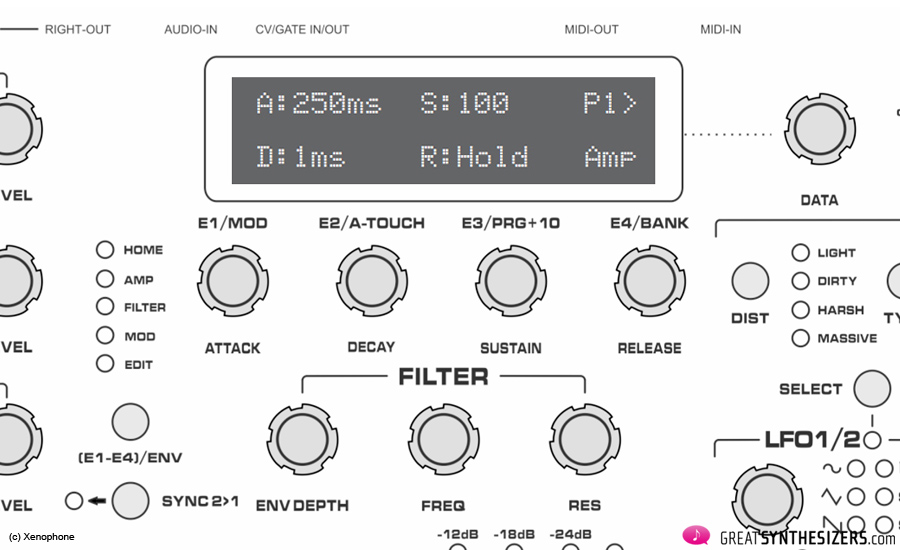
Hypersynth Xenophone
Klar, das Display ist nicht groß und die Gefahr des Verlorengehens im Arbeitsprozess tendiert gegen Null. Admittedly, the display doesn’t show too much information, so there’s not that much risk of getting lost in a jungle of values. Nevertheless, adjusting envelope settings may be confusing at times.
Be that as it may, Hypersynth offers two constructive remedies for faster envelope programming:
History Feature: Xenophone keeps track of the last edited envelope and shows it by blinking the related LED. Thus you can switch back to the last tweaked envelope simply by pressing [ENV] button once. (For example, imagine the display showing “Mod Env” page when you use [freq] knob to change filter frequency. The display will jump to the Filter edit-page and the “Mod Env LED” will start blinking, indicating that you can switch back to Mod Env by pressing ENV button again).
[Now, are you still with us?]
UI-Fixed Mode: As you can only edit envelopes with soft-knobs, this feature allows you to edit envelope parameters and other synth elements at the same time without the display switching to the new parameters. It temporarily enables/disables the “Display Mode = Fixed”, while you tweak the envelopes in “Display Mode = Jump”. To enable UI-Fixed mode, press the [enter] button on the envelope edit-page, locking the screen to that page, while allowing you to change other parameters in the background. To disable, press [enter] again.
[Maybe you’re getting an idea of the problems we have with the English manual. But there are geniuses out there, we know, who will be able to surmount even these difficulties.]
Back to our main topic – the Xenophone workflow. Programming the LFOs is not exactly easy, either. Sources and targets have their individual buttons (and LEDs), but most of the LFO settings are only accessible via the display and sub-menues. This combination of hard- and software-based programmability is what we prefer to call a “slightly problematic” workflow.
 Pic: the XEditor shows all 3 (6-stage) envelopes at the same time …
Pic: the XEditor shows all 3 (6-stage) envelopes at the same time …
Whether or not the workflow factor is a problem, is up to you. It’s certainly something you get used to with time. And … ah yes, the free XEditor software seems to do away with almost all of the workflow weaknesses.
The Xenophone SOUND
We have attached 30 minutes of audio files demonstrating the flexible, versatile and powerful Xenophone. This instrument is perfectly suitable for sequencer / arpeggio patterns and also for basslines and lead-sounds.
Some analog quirkiness is missing, though … so, for a true bass-monster, you might prefer other synths. We also had difficulties generating “truely amazing” FX sounds. Maybe this was due to a lack of analog inaccuracies (the DCOs are pretty stable and the filter resonance lacks some extra dirt). But the demos reflect the high sound quality very nicely. Listen to them with good headphones! And enjoy the electric guitar synth sound.
If you are looking for a definite recommendation – Xenophone yes or no – forget it!
You’re going to have to listen to and work with this baby yourself. Explore Xenophone’s musical potential and discover for yourself whether you are able to create the sounds you’re looking for.
It goes without saying that there’s a lot to explore here. The Xenophone boosts 212 parameters, all MIDI-controllable, which says enough about the instrument’s potential. 3 DCOs, a vast multimode filter, 3 LFOs, 3 extended envelopes, a huge modulation matrix, sequencer and arpeggaitor … what else could you wish for?
Although the attached sound examples have been largely made with the Hypersynth Xenophone (90%), a small rest (10%) was done by the lovely Novation Bass Station II, which also served as masterkeyboard (and provided its small, but handy sequencer every now and then) …
Hypersynth Xenophone
Monophonic Analog Synthesizer
Price: 899 USD / approx. 990 Euros
Website Manufacturer:
http://www.hypersynth.com/xenophone.html

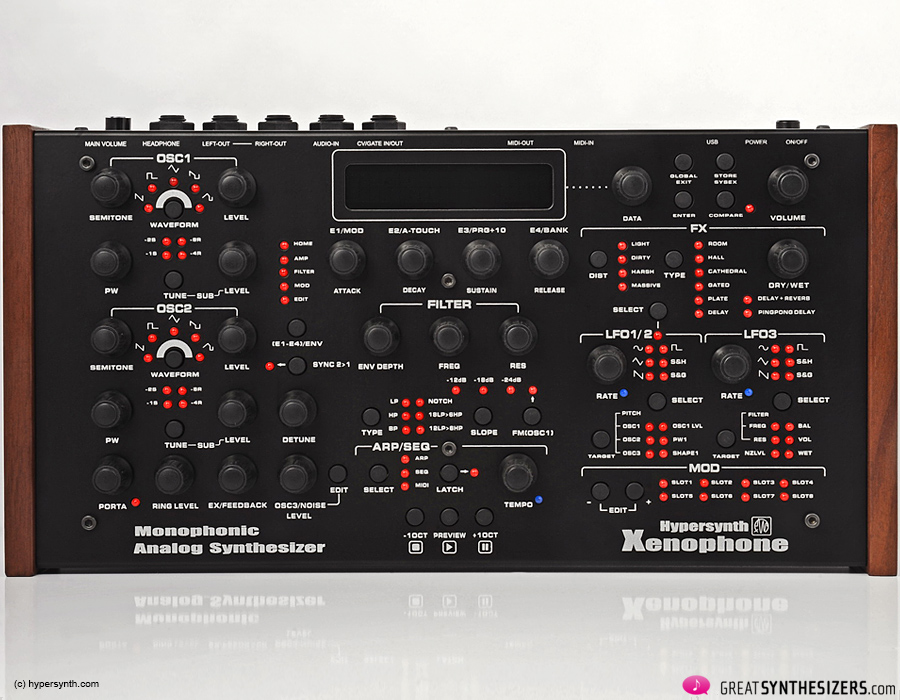
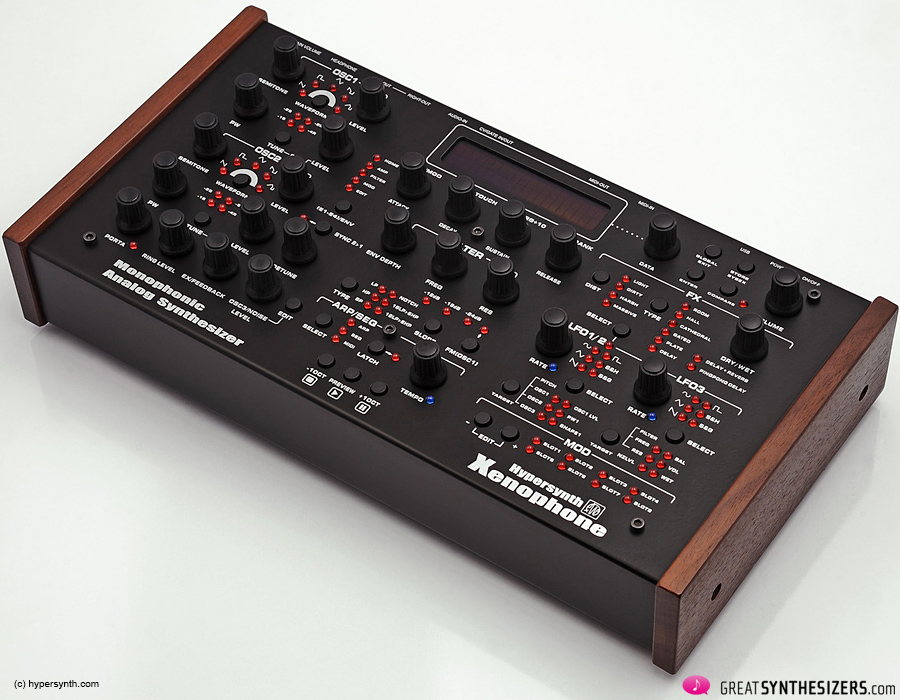
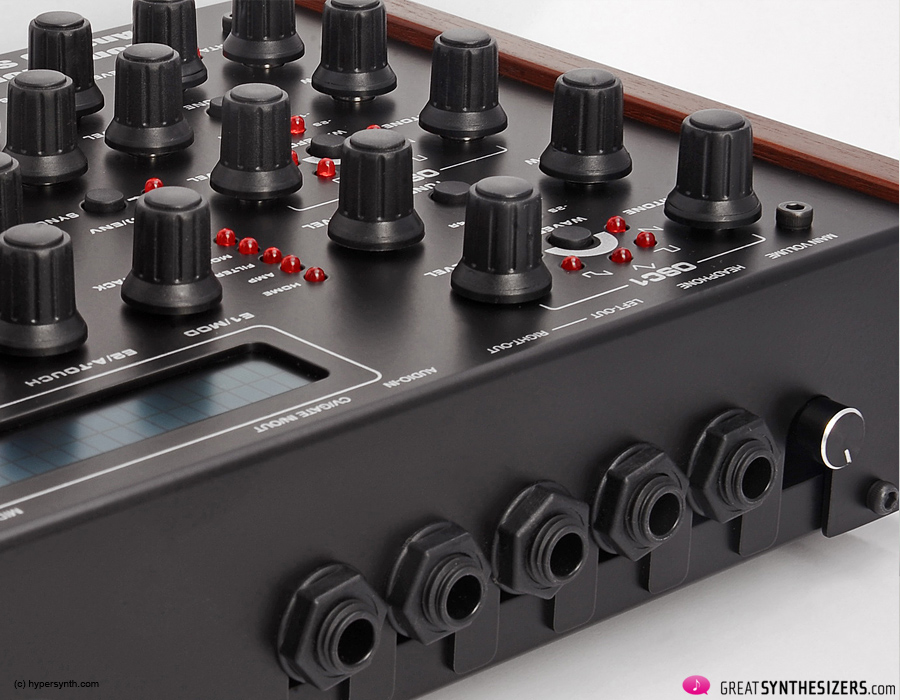
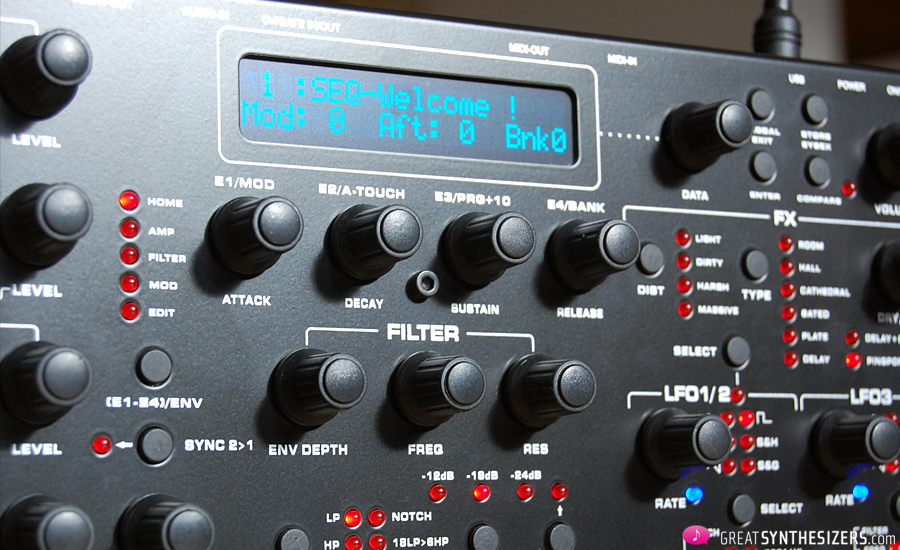
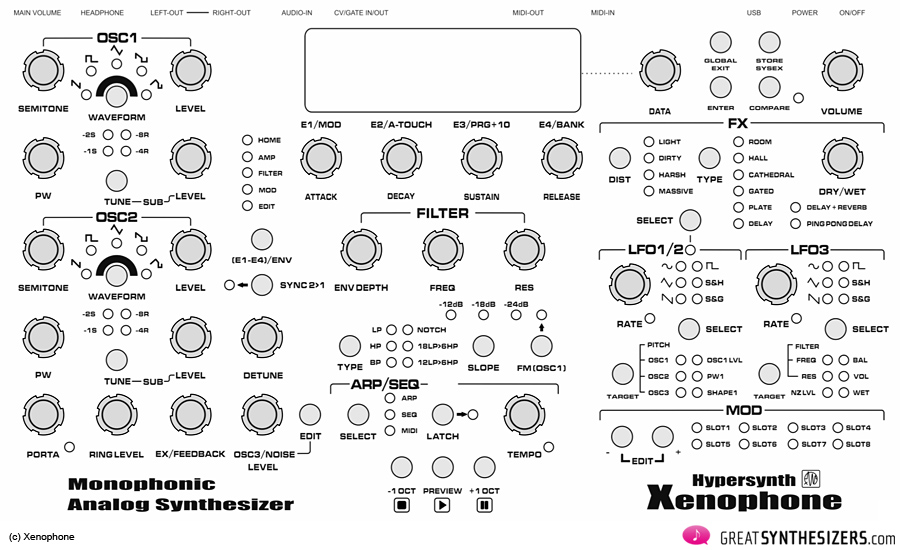
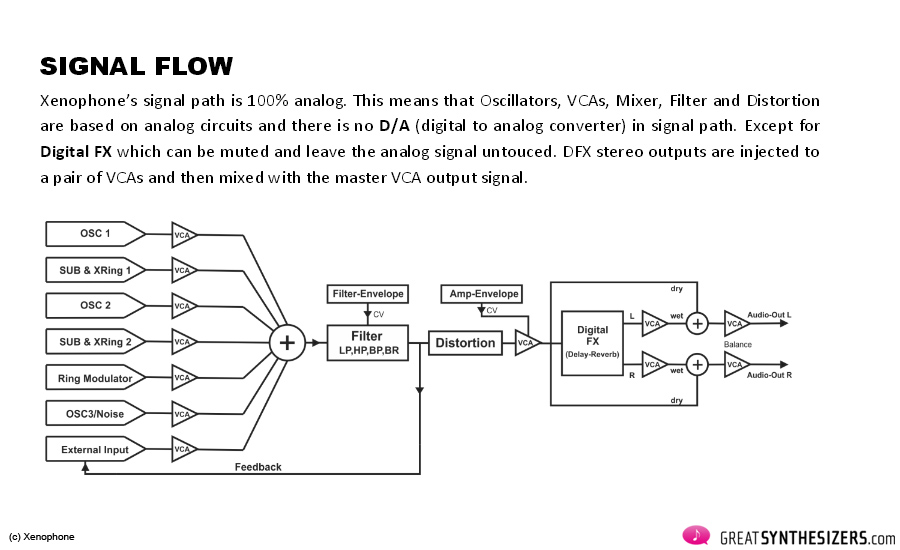
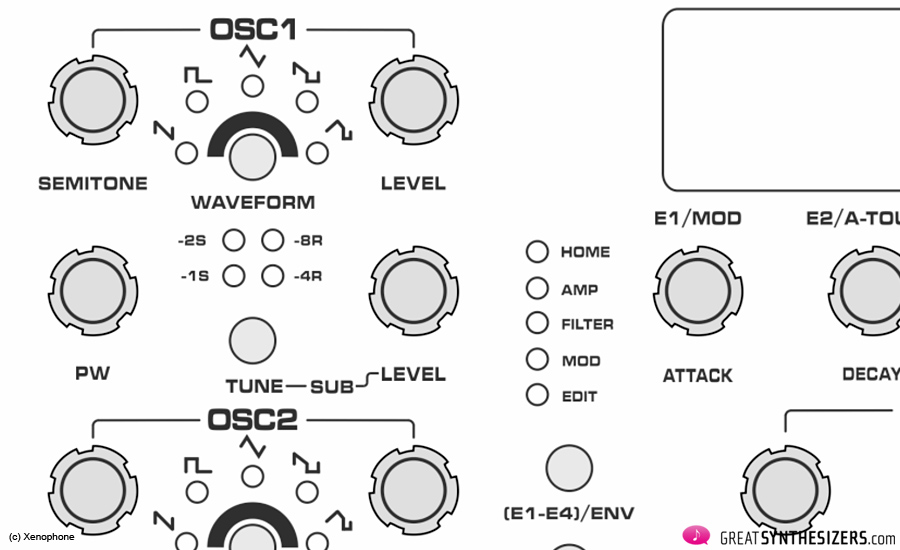
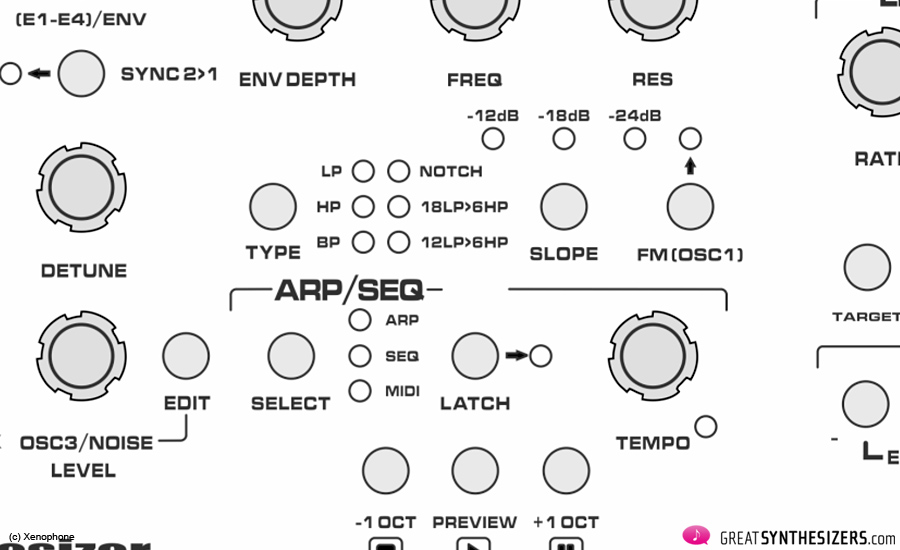
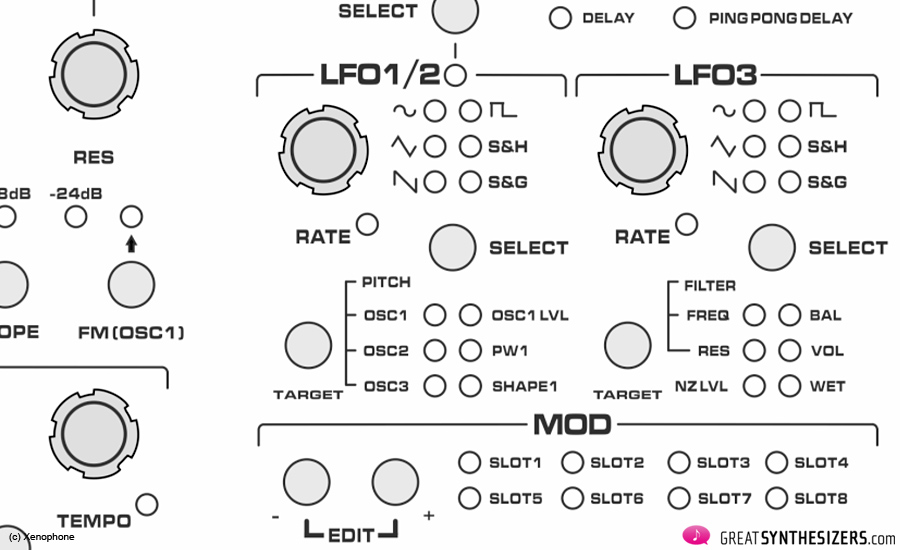
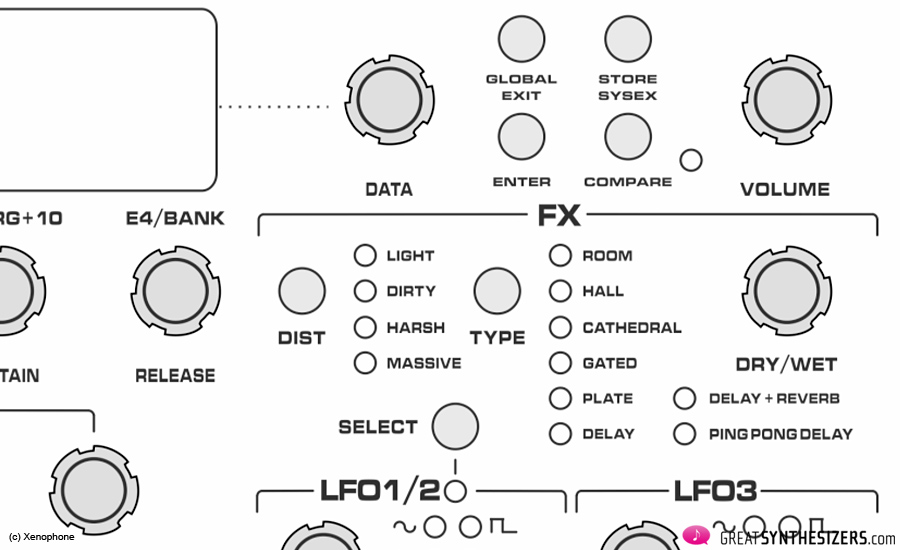
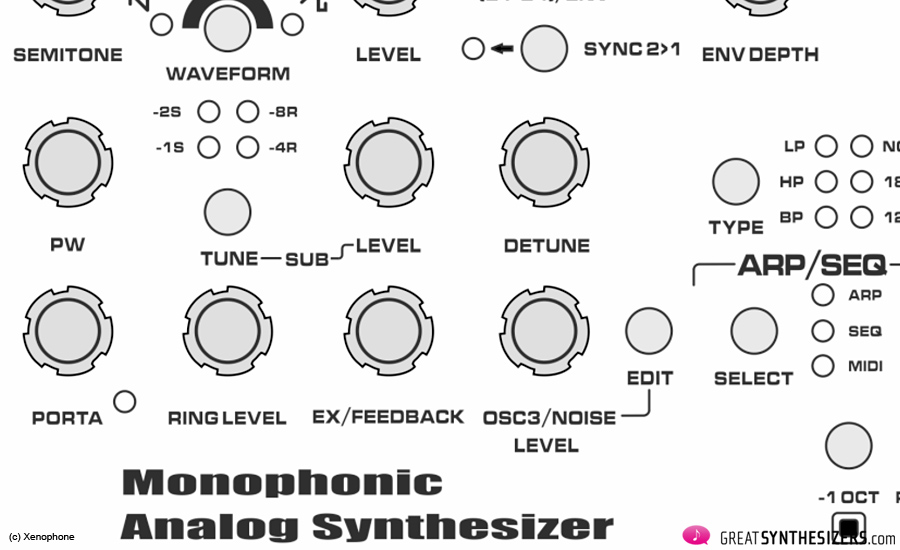

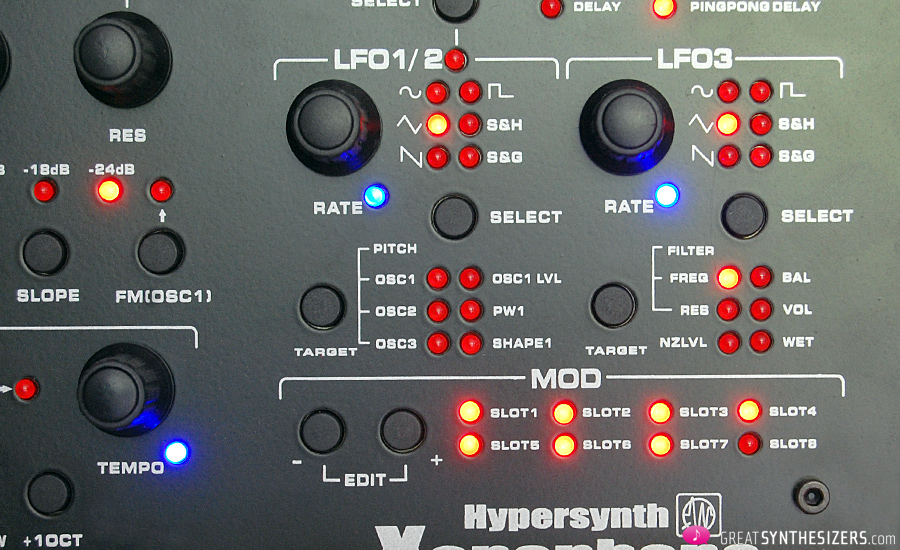

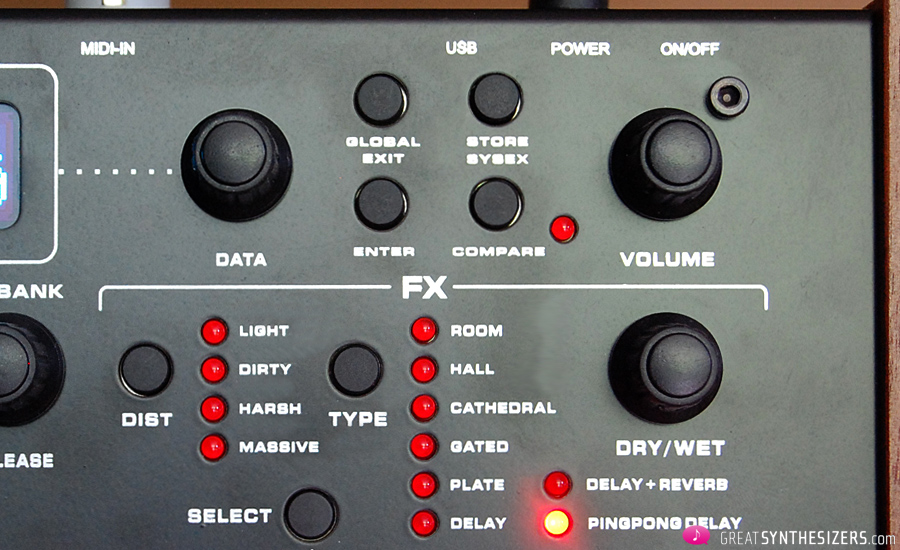

Thanks for the test!
I can’t find audio files anywhere??
Oups, they are on the german page. Sorry…thanks for sharing.
… sorry – you’re right … here they are!
re: synth guitar feedback: there are really great feedback-drenched guitar sounds on kurzweil and korg keyboards in general i’ve found. Kurzweils let you set a bend-up and bend-down amount separately too allowing you to bend up normally but dive down low when bent down. The lead guitar patch on my korg Z1 has an especially nasty and realistic tone progression with multiple EGs interacting in the soup :D
Thx for this extensive review. My Roland JP-8000 is quite impressive at making electric guitar sounds. Sound a tiny bit more digital but so do electric guitars. Check if out if you can :)
I don’t think electric guitar emulation is quite the point here. Don’t get off track. This synth is momentous at anything and sounds unlike anything else available with amazingly varied controls. I wouldn’t have a Moog. I will have this.
I don’t find the Xenophone interface confusing at all. I don’t understand where the reviewer’s confusion arises. It is perfectly lucid to me.But the “10% done by the lovely Bass Station II” is puzzling. Do you mean the sounds were from the BS2, or you were simply using BS2 as a controller keyboard, in which case the BS2 would bear hardly a mention. If there are BS2 sounds up there, well, why? What would be the point of corrupting the sound of the synth under review?
Hi. I have an hezitation between Xenophone and Dominion 1. Any comparison element? Can both be even compared?
… don’t think so. Quite a different sound, very different user panel and sound possibiities. I’d go for the Dominion 1, but that’s my very (very) personal opinion ….